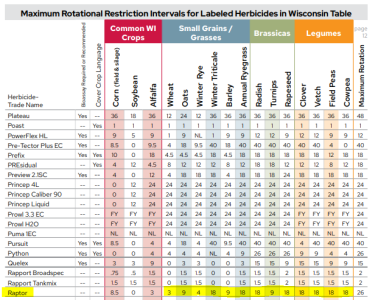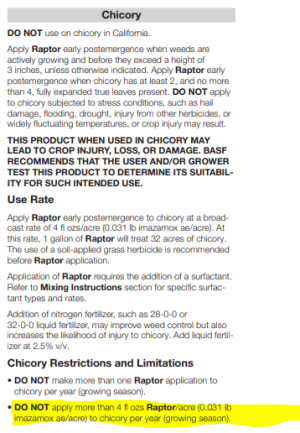SD51555
5 year old buck +
I've followed the talk about Imox on the web and have heard great reviews about it's ability to clean up a plot. I've read the label top to bottom, and there is no safe to spray list, and no rotational restriction for switching back to other crops. I did a google to find the trade name of IMO (Raptor), and came across a rotational restriction chart put out by UW Madison. I've heard it's safe on clover and chicory, but will it really knock out so many other options for two growing seasons? I'm also going to lose lots of other species to the application like buttercup, thistle, and dandelion, and I'm worried about my bumper crop of black eyed susan. Here's the document. What am I getting wrong here?







